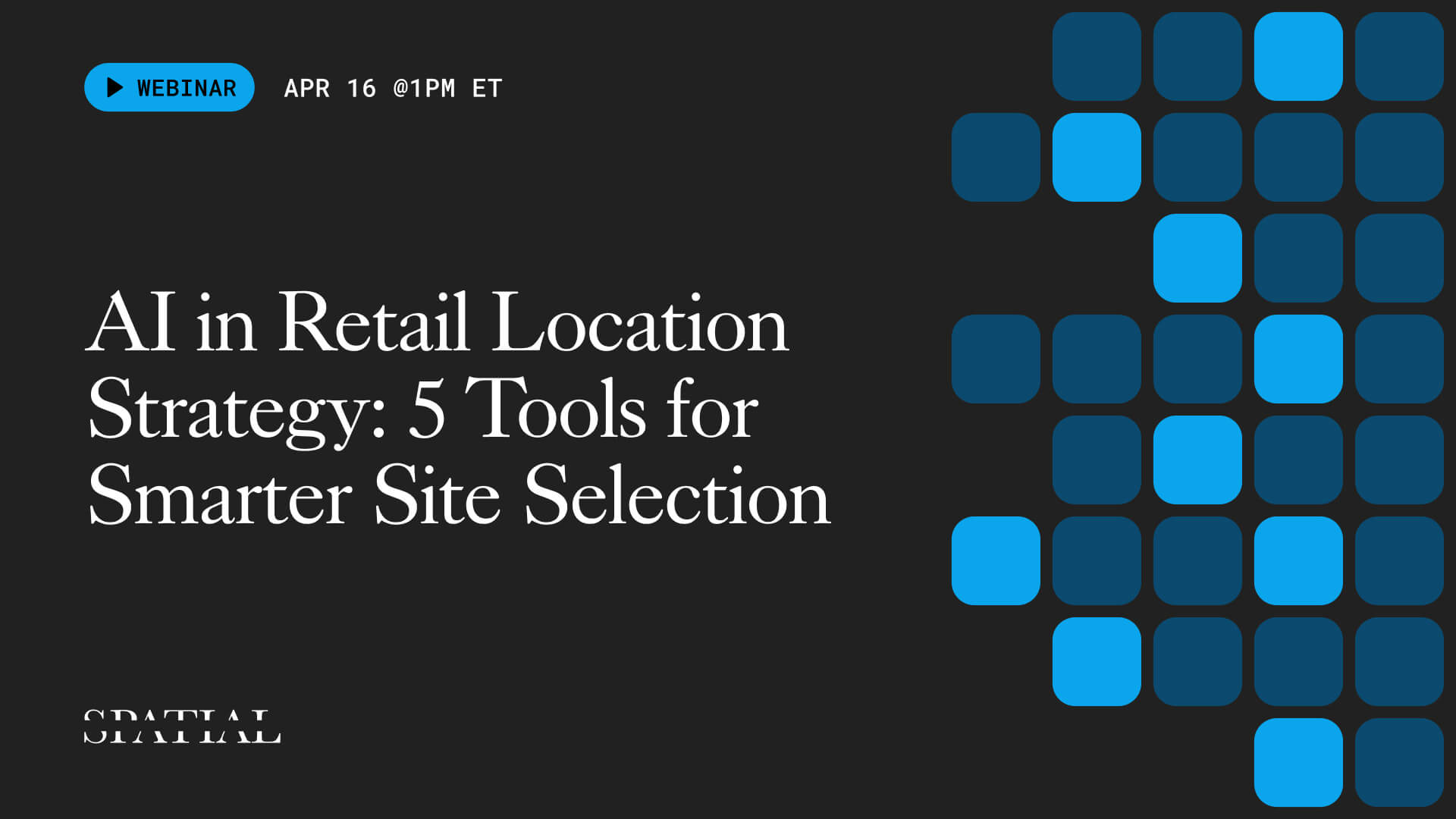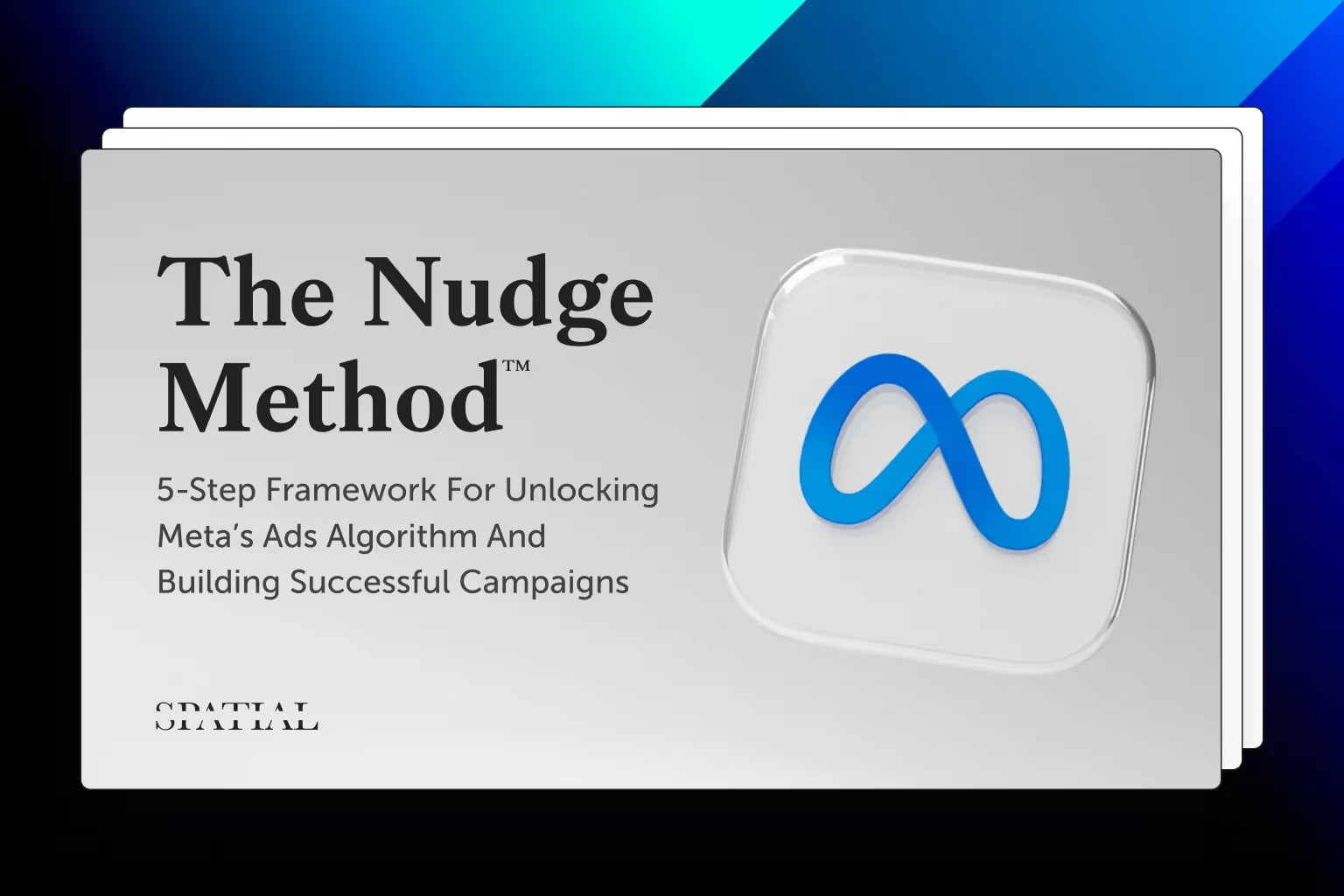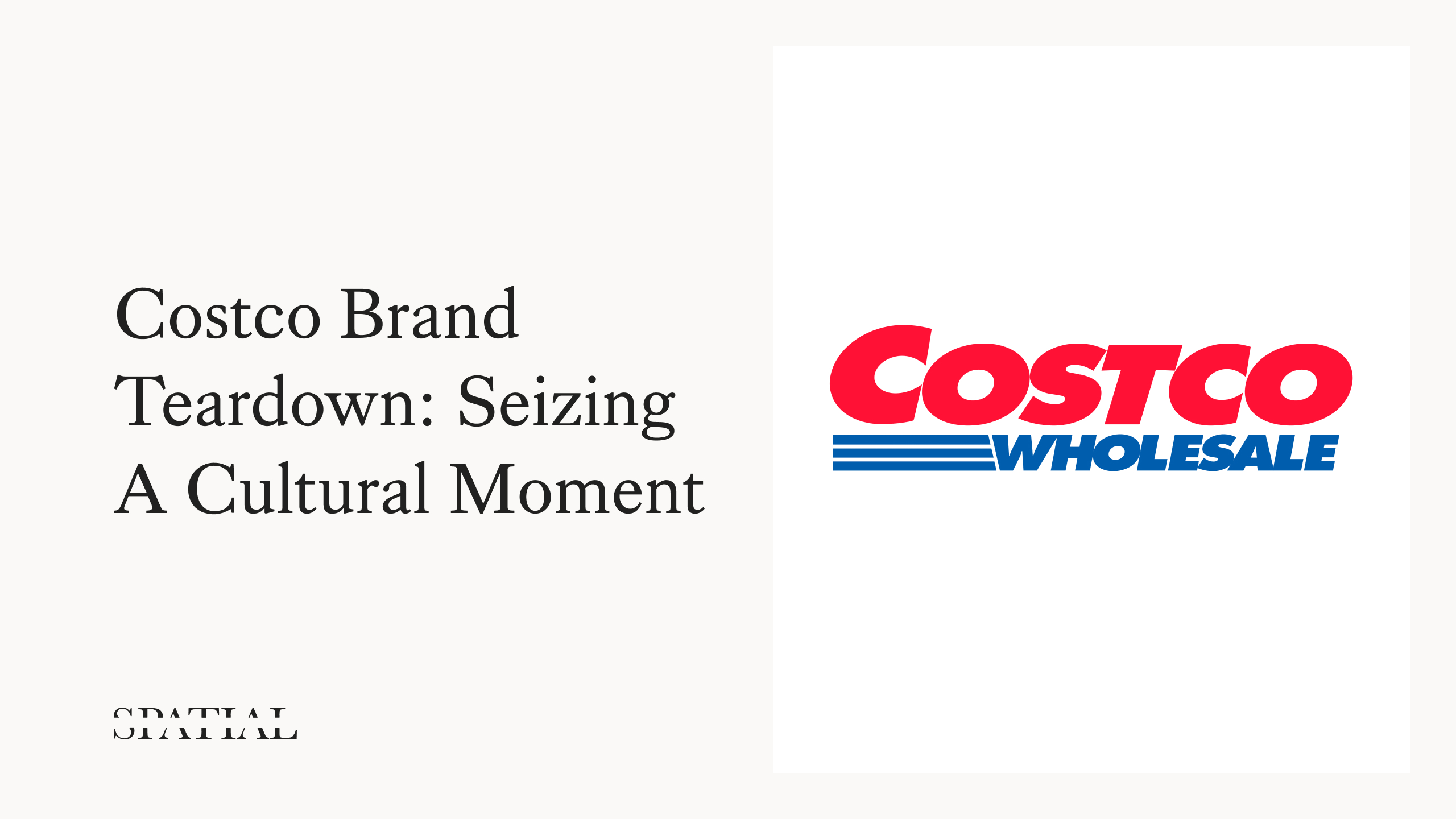The Complete Guide to Psychographic Segmentation Systems for Retail [+ Free Checklist]
Introduction
Behind every successful retail brand is a deep understanding of its customers' preferences and lifestyles. Since the 1970s, retailers have leveraged psychographic segmentation systems to unlock these insights and enhance decision-making.
Whether you are segmenting customers for the first time, enriching your first-party segmentation, or ready to level up your strategy, choosing the right segmentation solution isn’t a decision to be taken lightly.
Although there are many components related to segmentation, the criteria for evaluating each solution remains the same. That’s why we’ve put together this guide to help retailers cut through the noise and make the right choice.
This guide will help you select the right psychographic segmentation solution based on your business needs. After reading this, you’ll have a thorough understanding of the differences between the available solutions, a checklist for evaluating them, and a plan for implementing your chosen solution.
{{schedule-demo}}
What Is Psychographic Segmentation?
Psychographic segmentation (referred to as geodemographic segmentation in the UK) is a method that historically uses neighborhood census data to classify consumers into clusters of 60-100 subgroups using k-means clustering.
Once the clusters are grouped, most segmentation systems apply survey data to predict how people in those clusters might behave. The term "psychographics" is often used in the US for geodemographic systems, but "geodemographics" is more accurate since the method focuses on location and demographics.
For retailers, the value of these segmentation systems lies in their geographic tie-in. Every segment can be mapped, and every postal address can be attached to a segment.
A Brief History of Geodemographic Segmentation
The history of these segmentation systems has been the subject of multiple books. Here’s a brief overview: Geodemographics were developed by two individuals in different countries around the same time. In the US, Jonathan Robin created the PRIZM system, while in the UK, Richard Webber developed what became the ACORN and MOSAIC systems. Although they didn’t know each other, both used similar methods, inspired by the first computer-based census data in their respective countries.
A key moment for geodemographics occurred when Webber presented his clustered neighborhoods, and a market researcher realized the data could help verify sample sizes and better describe neighborhood clusters. When survey data was attached to the demographic clusters, it helped describe the segments.
The Four Factors to Consider When Choosing a Segmentation System for Retail
When choosing a psychographic segmentation system, it can be unclear what the main differences are. Here’s a breakdown of the key factors:
Granularity: Household vs. Neighborhood
Deciding between neighborhood and household-level segmentation impacts the detail of your customer insights. Neighborhood segmentation, like ESRI’s Tapestry, groups everyone in a census block group together, while household segmentation, like MOSAIC or PersonaLive, can identify different segments even on the same street using individual address-level data. Geographic segmentation works well for studying trade areas, but household-level segmentation is better for acquiring new customers or boosting repeat sales.
Philosophy: Behavioral vs. Demographic
The choice between grouping by behaviors or demographics influences the accuracy of your targeting. People can be grouped by their demographics alone or by incorporating behaviors. Behavioral segmentations, like PersonaLive, use a combination of social media, retail visitation (through mobile foot traffic), and demographic traits to classify consumers. Demographic segmentation alone works for brands like Walmart, but when emotional or cultural reasons for buying are involved, behavioral segmentations are statistically more predictive.
Velocity: Live vs. Static
Timeliness allows you to strike while the iron is hot. Segmentations that rely on surveys alone will miss social, cultural, and retail trends until they can be incorporated into a questionnaire the following year. If your segmentation is only for studying trade areas, this won’t make much of a difference. But for marketing, it’s best to stay fresh.
Delivery: Consultants vs. Platform
Whether you rely on consultants or use a software platform affects how quickly and easily you can implement your segmentation strategy. Since the 1970s, psychographic segmentation has mostly been handled by consultants or internal data scientists who access the raw data, match it, rank segments, map them, and suggest strategies. Recently, some companies have developed software that automates these tasks, saving time and making it easier to analyze and activate the data.
Key Differences Checklist:
- Is this segmentation at the household or neighborhood level?
- What are the variables used to classify neighborhoods/households?
- How frequently are the segment insights updated?
- Are the segment insights survey- or behavior-based?
- Is there a self-service tool to activate the segmentation?
15 Retail Segmentation Use Cases
The key to evaluating a psychographic segmentation solution is knowing how you plan to use the data. In the next section, we’ll review the three main growth levers for retail brands and discuss five use cases within each. At the end of each section, you’ll find a checklist of questions to ensure you choose a segmentation solution that can meet your needs.
The three primary ways to grow your retail business are:
- Store expansion
- Customer acquisition
- Customer retention
Store Expansion: Opening New Retail Locations
If you are a location-based brand, opening new locations is a huge growth lever but extremely costly if you miss the mark. Psychographic segmentation can help by ensuring there are enough of your ideal customers in a trade area to support your business.
Your segmentation solution should also clearly indicate which customers are the best. If there are existing locations, this can be done with mobile foot traffic data. If there are existing sales data, this can be done by mapping the postal addresses or emails of your customers to their segment.
Ultimately, once you know your segments, you should be able to create heatmaps to find where your target segments are and aggregate the total population of segments in each trade area for comparison.
Use cases for retail segmentation:
- Quickly Segment Mobile Data: Mobile foot traffic data is used in retail to estimate visits and see where people are coming from. The next big question is, "Who are these visitors?" Segmentation solutions should automatically show you who’s visiting your store without extensive data work.
- Identify Markets with Your Ideal Customers: Once you’ve ranked your best customer segments, you’ll want a mapping platform that allows you to heatmap markets that have a high proportion of these people.
- View Trade Area Segments: When looking at a completely new location, you’ll want to know how many of your ideal segments are already there. You should be able to sum the population in the trade area to view the percentage and count of households in your target demographic.
- Compare Locations (Your Stores & Competition): Comparing locations should be easy. It’s always helpful to compare your bottom 25% of stores with the top 25% to see if there are underlying patterns in the type of people that frequent both. Or you may want to compare your store vs. a competitor.
- Enhance Predictive & Cannibalization Models: Cannibalization models overlay trade areas to predict how many people will simply move their buying to another store. If none of the people are in the target segment, it is less likely to make a difference. Demographic-only segmentations don’t tend to be particularly effective in retail predictive models if there are already demographic variables involved.
Store expansion checklist:
- Does this segment mobile foot traffic data?
- How is customer mapping accomplished?
- Are the segments easily mapped?
- Can this vary results by region?
- What is its predictive power?
Customer Acquisition: Finding More Ideal Customers
If your primary growth channel is through advertising and new customer acquisition using social, Google Ads, display advertising, or direct mail, connecting the right offer to the right audience is crucial.
Use cases for retail segmentation:
- Determine Your Valuable Customers: Your segmentation solution should quickly rank your top customers by number and by how much they might spend. By combining these rankings with the total market population, you'll get a key metric called "size of prize," which helps you decide where to invest your money.
- Target Audiences Directly: If reaching new audiences is important, ensure your segmentation platform connects with Meta, Google, Trade Desk, and others. This way, you can easily include them in campaigns and directly target people in those segments, not just by zip code or general location.
- Inspire Relevant Offers, Creative, and Copy: Reaching the right audience is not enough. Your offer, message, and imagery have to strike a chord. Your segmentation should help your team create great content by showing the mindsets, values, demographics, and previously successful campaigns for each segment.
- Reveal Channels to Target: Your segmentation system should show you the ideal channels to target. Are they spending time on Facebook, Instagram, TikTok, TV, podcasts, or news sites? Some solutions can even identify the specific subchannels your target audience uses. For example, if you know they listen to podcasts, these systems can tell you which ones.
- Report Results: It should be very clear which campaigns, channels, messaging, and offers are getting the best results. You’ll want to ask if there is a dashboard to review the results.
Customer acquisition checklist:
- How is the customer matching accomplished?
- Can it easily rank and show the LTV of my top customers?
- Can it show me how many of those customers are available in the market?
- Is there a direct platform integration with Meta, Google, etc., or are these inspirations?
- Does this help me choose the ideal channel to target them?
- How does this easily inspire relevant offers, creative, and copy?
- How can I easily measure results?
{{the-nudge-method}}
Customer Retention: Scaling Repeat Customers
It's easier to sell to current customers than to find new ones. And the bigger your current customer base, the more profitable this strategy will be. For example, brands like AAA, with many members, focus on selling more products to their existing members. If you have a large customer base and want to keep them happy and coming back, use psychographic segmentation to boost repeat sales and retain customers. The key to this is having the ability to match at the household level and get a file back that has the segment of each first-party contact.
Use cases for retail segmentation:
- Personalized Email Marketing: By attaching a segment to each one of your customers, you can split up email campaigns into distinct groups. For example, AAA split their insurance newsletter into boomers, singles, and young professionals, resulting in a 14% higher open rate and a 50% higher conversion rate.
- Personalized Product Recommendations: If your segmentation has a self-serve platform, you may be able to see penetration rates of certain products by segment. This makes it easy to see what people in that segment are most likely to buy and recommend to them the most relevant product through email or retargeting.
- Demographic Enrichment: Some psychographic segmentation providers offer contact enrichment, such as demographics and emails, on your first-party data. This can be especially helpful if, for example, you are providing specific offers based on gender or age.
- Email Enrichment: Some restaurants, for example, may have first and last names from POS transactions but no way to email their customers. Some segmentation systems can match those contacts and provide opt-in emails to target their current customers.
- Enhanced Loyalty Programs: Loyalty programs can be improved by combining customer behavior with socioeconomic factors. For example, a makeup brand found that a large Hispanic segment of their subscribers was churning. They were able to fix this because they realized the segment had been ignored after a big push to attract them years earlier.
Customer retention checklist:
- Can I enrich customer and loyalty records?
- Does this have an API solution for bulk records?
- Does this include demographic enrichment?
- Does this include email enrichment?
- Can I see product sales by segment?
{{customer-segmentation-toolkit}}
How to Implement Your Retail Segmentation System
Once you choose your ideal segmentation solution, it’s time to implement it! There are five steps to ensuring your segmentation sets a firm foundation for your retail business:
Step 1: Choose Use Cases
During the buying process, you’ll already have a few primary use cases in mind. Choose from the 15 use cases mentioned above within the three growth levers. Have a few stories ready to begin getting buy-in.
Step 2: Upload & Rank Segments
If you are working with a consultant, you’ll want to start the process of organizing, sending, and reporting on the customer data. If you are using a platform-based segmentation, you can upload your customer data or mobile visits and immediately see the top-performing segments.
Step 3: Share Top Segments With Your Team
Once you’ve identified your target segments, it’s time to share the strategy with your whole team. You should have some exciting insights to reveal about your core customer, their value to your brand, and how many there are. Some creative ideas include having the team guess the top segments before the reveal, holding individual sessions with franchisees, or preparing a presentation for a board meeting.
This is your time to get the team excited about who they serve, and they should walk away with a deeper sense of meaning. Humans are incredible, and remembering the uniqueness of our customers is energizing.
Step 4: Execute One Use Case Per Quarter
Instead of trying to do everything at once, focus on one high-leverage use case at a time. After your team sees the results, you’ll likely begin to get an avalanche of requests to use the segmentation system for their specific goals.
Step 5: Evaluate Results
Finally, evaluate the results. Which channels worked? Which offers resonated with which segments? Use those insights to improve your next campaign.
Conclusion (& Checklist)
An effective psychographic segmentation strategy guides your team to focus on the right customers, channels, messages, and strategies. Instead of wasting effort trying to figure out what works, the right segmentation solution points you in the right direction.
With this 22-point checklist, you’re now equipped to confidently choose the right segmentation tool to drive retail growth and make your efforts count.

What you should do now
Whenever you're ready, here are 3 ways Spatial.ai can help:
- See PersonaLive In Action. If you'd like to segment and target your best customers using real-time behavioral data, schedule a free 30-min demo to get started.
- Subscribe To Consumer Code. If you've found this helpful, check out our newsletter and podcast where we share more consumer research and insights for retail marketers.
- Share This Post. If you know another marketer who’d enjoy reading this post, share it with them on Linkedin, X, or Facebook.
Get retail marketing tips
We email every monday with smart growth strategy ideas. Almost no promotion. Just value.

.avif)
%20(1).jpg)



Need help understanding who your best customers are? Schedule a free demo of the PersonaLive platform to learn how to segment your customers in under 60 minutes.




